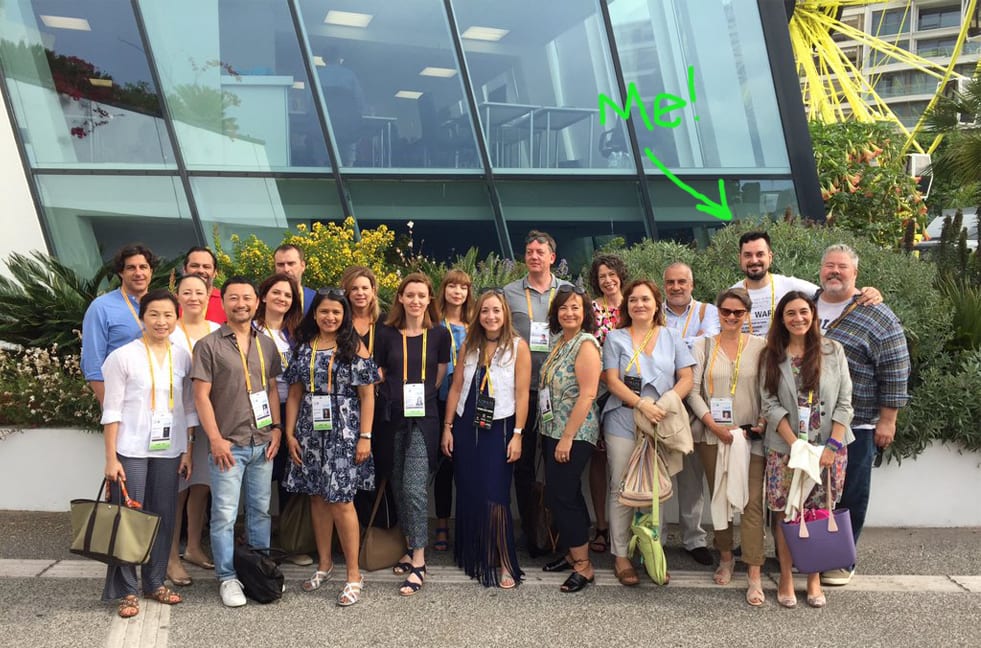It was truly an honor to be a PR juror at this year’s Cannes Lions International Festival of Creativity. Deliberating with esteemed colleagues and peers and, ultimately, rewarding innovation within the industry was an experience I will not soon forget.
Along with my fellow jurors, we had the pleasure of acknowledging some truly exceptional cases that represent the future of our industry.
So, what is the process like behind the scenes? Here are a few insights from the inside…
When we began our work, all of the judges got together at a hotel close by to get better acquainted. We quickly found common ground and started to build and affinity for each other, a bond that extended into the week as we began to dive into the exceptional work that we collectively came here to judge.
It was intense, so much to discuss and debate, so much to see, examine and showcase for our industry. After seven days, at least 10 hours per day, we unearthed the work that made us most proud. Work that, at its core, surpassed the competition in the three critical ways that count most: storytelling, creativity and insight.
Needless to say, we saw A LOT of good work, but only a few were Cannes Lion worthy. As is the case with most award shows, I can say that a lot of good work remained on the shortlist. Some mistakes were avoidable. Some agencies didn’t recognize the importance of category placement, and others simply didn’t pay enough attention to writing a compelling entry. With so many outstanding campaigns to review, those small details can make all the difference.
Beyond the finer details, I would be remiss if I didn’t highlight some points that I think can make all the difference for those on a quest for Cannes gold next year…
1. Forget about AVEs! The jury wants to see real measurement with real results impacting business, brand reputation, and sentimental changes. Provide as much information and tangible value that you have at your disposal.
2. Please refrain from saying that your case broke the internet, because it didn’t. You were trending, absolutely, but your hashtag/content was just one conversation between a web of billions of people. Everything within its proper context.
3. A related point, when you say you had zero media budget in the case, it can have an adverse impact on your results, and the larger industry. There is always a cost, so state it.
4. Be both creative-led and data-driven. Cannes Lions is a festival for creativity, so make sure you have a fresh idea strong enough to impress even the most judicious PR veteran. With that in mind, I can imagine juror rooms in a not-too-distant-future being even more reliant on the data behind the insights. Improve your agencies skill-set here and try to be data-driven in your daily work. It makes the work stronger and reinforces all of your points with hard facts. Clearly making that case is imperative if you want to convince a juror to vote for your work.
5. Capitalize on, but do not exploit, trends. They’re useful to navigate momentum in the moment, but be careful and use the right criteria to ensure your work will break through. None of the cases that led with trending topics instead of cogent insights made it past the shortlist.
6. One of the biggest trends we noticed this year was how agencies helped brands to develop tangible and innovative products that generated conversations and delivered results. Innovations were not exclusively tech-based, we saw award-winning work manifested into jerseys, books and crayons.
I want to congratulate and acknowledge my dear colleague, and OPRG CEO, Karen van Bergen, my fellow friends on the jury, particularly James Wright, who brought amazing insights to the table, Matthias Bonjer, our punk rock legend, and Salvador da Cunha, who made us all laugh out loud along the way!
I’ll leave you with this: Great ideas never come from comfort zones. We awarded work that was, above all else, fearless. – Gabriel Araujo
Follow @KetchumPR throughout the festival and join the conversation on our #InspiredbyCannes social hub!



